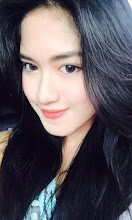FIRST AID AND FIRST LEARNING AT THE PUPPY
Have you adopted a puppy or do you intend to? The first days of your pet in his brand new home are important or even decisive for his state of health and his future behavior…
A first consultation with the veterinarian is necessary…
One of the first reflexes of a new master is to make an appointment immediately with the veterinarian as soon as the adoption is finalized. The first visit to the veterinarian is indeed an opportunity to address many points with the owner such as vaccination protocols, deworming and pest control to put in place to best protect the health of the puppy.
If it is true that the puppy can be brought to the veterinarian as soon as it is adopted, the dog experts of Toutoupourlechien recommend to let him get used to his new environment for a few days so that the new master can observe his behavior. Based on these observations, the veterinarian may choose to dwell on certain points to be examined in more detail during the puppy’s clinical examination and that the teacher can draw up a list of questions to ask the health professional. canine.
These few days should also be used to observe the appearance of the puppy’s stool . They are a good indicator of the general health of the animal and will help to know if his diet is well adapted. Do not neglect them!
Puppy hygiene issues
A bath yes but with some precautions
On leaving the kennel, a puppy may have a strong enough smell that may make his master want to give him a bath. It is quite possible to do it from the age of 2 months but taking care that it does not take cold. To do this, the duration of the bath should not exceed 5 to 10 min and the temperature of the water should ideally be between 30 and 35 ° C. Use a hand shower by adjusting the flow on a small jet so as not to make this first bath a traumatic experience. Do not use shampoo formulated for humans or infants but a shampoo specially adapted to the fragile skin of the puppy that you will take care to rinse well with clear water.
Be careful not to splash moss or water in the eyes or ears of the small animal. At the end of the bath, wipe your puppy conscientiously with several towels then let dry his coat naturally if the ambient temperature allows it. If it is cold, use a hair dryer to dry the coat, taking care not to burn the skin of the animal. To do this, set it to a moderate temperature, place your hand between the hot air jet and the puppy and make sure that the appliance is always moving during drying. Do not forget to reward him warmly after the bath with a session of games, ideal to evacuate tensions!
Do not give more than one bath a month to your dog to avoid altering his skin. Generally, two to three baths a year are ample for dogs. Between two baths, nothing prevents you from cleaning your coat with a wet washcloth.
Look after the pup’s eyes and ears
In most cases, the eyes do not require special care. Nevertheless, some animals may have yellowish to red-brown lacrimation or secretions. This is particularly the case of drooping or short-nosed dog breeds. If these secretions are benign, it is nevertheless advisable to clean them daily to prevent them from stagnating and causing complications. To avoid this, simply clean the eye contour of your pet daily with a sterile pad impregnated with saline. Never use eye drops to clean your pet’s eyes!
Healthy ears usually do not require internal cleaning but it is necessary to inspect the inside regularly. The interior of the pavilion must be clean and rosy, without traces of brown wax or unpleasant odor. If the ear shows some traces of earwax, it can be cleaned using an ear cleaner product suitable for dogs and a sterile compress. Instill a few drops of products in the ear canal and then massage your dog’s ear to loosen the dirt that has accumulated. Then let your dog snort. Then you wipe what came out with the sterile pad. Never use a cotton swab!
Clean teeth…
Puppies have baby teeth that must have all fallen around 7 months old. However, it is possible to get them used to brushing teeth from an early age. Use a fingernail with soft bristles and gently massage your teeth and gums. This gesture will get him used to regular brushing of his adult teeth which can then be done with a suitable toothbrush and a toothpaste specially formulated for dogs.
FIRST AID AND FIRST LEARNING AT THE PUPPY
 Reviewed by Tya Chyntya
on
October 24, 2019
Rating:
Reviewed by Tya Chyntya
on
October 24, 2019
Rating:
 Reviewed by Tya Chyntya
on
October 24, 2019
Rating:
Reviewed by Tya Chyntya
on
October 24, 2019
Rating:


No comments: